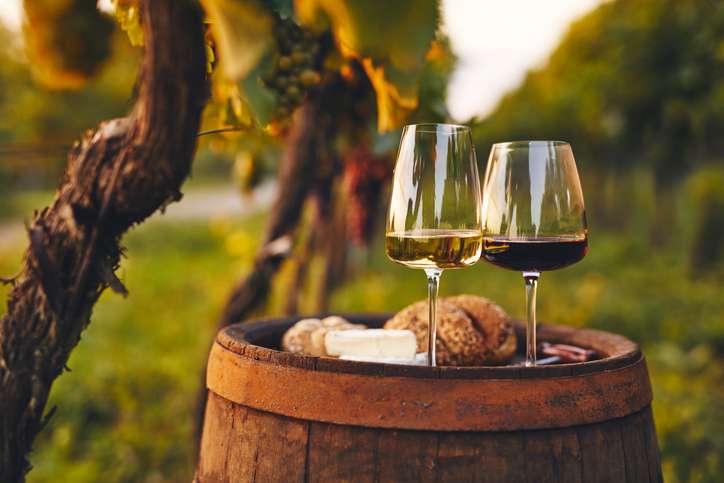
Natural wine is complicated. Categorization is cloudy—what counts and what doesn’t, where the shift happens and why. Attempts to impose order (the all-new Vin Méthode Nature labelling system, for example) have been met with responses varying from indifference to outright disdain. After all, the natural wine movement started with winemakers who didn’t want supervision. How did we think a new set of rules would go down?
So, with no assurance from appellation rules or winemaking regulations, no guarantee of how a bottle will taste—or offend—where does that leave the drinker? How do you market something that resists definition?
In a city like Tokyo, with more wine bars to muddle through than exits in Shibuya Station, it’s easy to get lost in the maze. This guide will take you back to where it all began. It will also show you where to find the people still at the heart of the movement, and worthy of your trust.
The Taste of Anarchy: What Is Natural Wine?
To go back to the beginning of natural wine, one has to start in Beaujolais, France. By the early eighties, the region was in a post-disco, post-war slump. Chemical agriculture was booming, and wine was being produced like processed food, where growers sacrificed their grapes at the altar of mass production.
The success of Beaujolais Nouveau had left the region drunk on consumerism, and terroir had been traded for novelty. But there were still some who remembered a different Beaujolais. Led by the teachings of chemist and winemaker Jules Chauvet, four men began looking towards a lost style of winemaking, rejecting practices that stabilized the wines and ensured they tasted the same every time.
Their only rule was that the wine be made of grapes, and nothing else. With no herbicides in the vineyard, no additions in the cellar, the wines were suddenly expressive—interesting again. Unpredictable, yes. But alive. They’d been revolting against the conventional wine market, but, with authenticity now at play, there was something to revolt for.
The Gang of Four Story
When word spread about what was happening over in Beaujolais, Chauvet’s gang of four earned the label of madmen. But bit by bit, people tasted the wines and changed their minds. They were joined by others who were tired of the establishment—brothers, sisters, comrades—and an uprising began: the natural wine movement. Their names (Marcel Lapierre, Jean Foillard, Guy Breton, and Jean-Paul Thevenet) became legendary.
I still remember the first time I heard the story—“The Gang of Four.” I was abuzz with a feeling of anarchy, with pride and passion. How badly had I wanted to clamp my fist around a glass of cloudy Gamay and cry “liberté!” afterwards. It was a story that dragged me into the world of wine in an entirely new way. The setting for my internal mutiny? A natural wine bar.
In the beginning, natural wine bars were just bistros, run by people who wanted to pour this new kind of wine but couldn’t anywhere else. As the uprising spread, these establishments began popping up everywhere—no longer just Paris, but Copenhagen, New York, Tokyo. They became vessels, not for tasting notes or vintage charts, but for stories of human struggle, revolution.
From Beaujolais to Tokyo: Tracing the Natural Wine Revolution
Credit by JackF
By the time natural wine made its way to Japan’s shores, the country was already reeling from another revolution: The One Straw Revolution. Though controversial, Masanobu Fukuoka’s promotion of chemical-free agriculture had already struck a chord with the Japanese public. This laid the groundwork for natural wine’s arrival. Japan’s embrace of natural wine felt organic from the beginning. Tokyo has long since been a nucleus for the celebration. Below are some of my favorite places to seek out natural bottles. Some of them, like Shongui, are long-established institutions, pillars in the establishment. But a couple of these places are brand new, opening at the beginning of 2025.
They demonstrate that the revolution lives and isn’t dying anytime soon. Funnily enough, none of these places have physical wine lists. Instead, they rely entirely on human connection and conversation—the most important part.
You might also interested in reading about: Chasing the Phantom Wine in Hokkaido
5 Best Natural Wine Bars in Tokyo
Juni, Meguro
Juni is the latest venture of Katy Cole, Californian-born chef and owner of Locale, the neighborhood restaurant next door. I had always suspected Katy to be a lover of natural wine—the small but exciting selection of bottles on offer at Locale hinted as much. This year, she confirmed my suspicions with her first wine-focused venue. Cole makes the ceramic plates herself, and she also prepares the food served on them. Most of the faces are familiar—regulars that have become her friends after years of cooking for the neighborhood.
Anyone expecting to find the traditional here might feel disappointed, but they will have the chance to discover something different instead. In place of Burgundy Pinots, Katy will guide you towards something fresh and crunchy from the Savoie, or a Spätburgunder from the Rheinhessen. Katy chooses everything with intention and with value in mind, bringing a bit of adventure into every bottle.
IG: @winebarjuni
Rego, Ebisu
There’s something quite special about sitting at a counter and being able to reach out and touch the person who dreamt the place up. Rego is a showcase of Go Matsui’s impeccable taste, perfected over years of curating and pouring from the capital of natural wine—Paris.
It’s easy to put together a fantasy selection, with the great producers and vintages that nobody can afford. Instead, Matsui dedicates Rego to the joy of research and innovation. There are once-in-a-lifetime bottles in his cellar, as you would expect.
But there are things that might surprise you too, tasty things from producers on the up, experimental products that could be there one minute, gone the next. While he respects minimal intervention, Matsui-san knows better than anyone that ‘natural’ is abstract, so he focuses on producers whose philosophies resonate with him in a more fundamental sense.
The result is a tribute to a lifelong love affair with wine and finding those intimate moments of shared delight between guest and sommelier.
IG: @rego_tokyo
Ahiru Store, Shibuya
There are very few things on this Earth I will stand in a queue for—but Ahiru Store is one of them. The inevitable line that forms at those doors at dusk feels like something of a ritual procession—one I respect too much to snub. Inside, you could be anywhere. Menus are scrawled on chalkboards, empty bottles line the walls like trophies of good times gone by.
As the queue suggests, Ahiru Store is always full inside—the windows fog with the heat of winter sweat and the breath of conversation. There are no empty seats—you can’t drink alone even if you wanted to.
At the heart of the buzz, there’s a quiet seriousness to service. Teruhiko Saito pours the wine, curating individual experiences through thoughtful conversation. There’s always great natural stuff for every budget, from France and beyond, and I’ve occasionally found some local wine made by the Japanese producers I’m curious about.
The kitchen sustains you in true bistro fare—home-baked bread, silken charcuterie, smokey octopus—really giving you no reason to leave, except, perhaps, to give up your seat for one of the other punters in the queue outside to get a chance at the magic. Go early, stay late, drink well.
IG: @ahiruani
La Pioche, Nihonbashi
Credit by La Pioche Facebook
Meaty, bloody, Grenache made by Japanese nationals in the South of France, tense, nutty Chardonnay from storied vineyards in Burgundy, often cult-worshipped and always entirely delicious; Shinya-san makes the bottles in his cellar with his mentors and friends. La Pioche connects you to a worldwide fraternity, a community built on a love for wine.
Without the safety net of a list, I love to watch him listen to my requests for the evening (“something smokey”, “something with age,” “something you’re excited about”), knit his brow, and disappear into the little door on the right wall. When he returns, he plonks three or four bottles in front of me, and we pore over them together.
On the rare occasion I’ve asked about some technical detail in the wine, trying to guarantee something from my own expectations, he has simply laughed and explained that the bottle was important because of the people who made it. Now, when he plonks those bottles in front of me, I wait for the one where he says, “This is made by a friend of mine.”
FaceBook: facebook.com/2013lapioche
Shonzui, Roppongi
Before any of the bars above had even been imagined, there was Shonzui. Back before most of the global population had even heard the phrase “natural wine,” Shonzui was there. When Shinsaku Katsuyama opened Shonzui in 1993, it was the first of its kind—the only place in the city to pour all-organic wine. Having walked straight past the entrance and ended up eaten alive by Roppongi Midtown, finding your way back to Shonzui’s anonymous entrance is sensory relief.
Its interiors are largely unchanged since its 1993 opening, and while the color scheme is certainly not subtle, the red/orange walls bear a mosaic of wine-loving history through hand-scrawled messages. It’s the true, authentic natural wine bar, intimate and uncomplicated, favoring food and wine (and people) with heart and soul.
Natural wine, born out of negation; a rejection of new technology and a return to the past. Chauvet’s Gang of Four were mad enough to imagine a world where wine carried soul again. Today their bravery is honored by those who succeed them—the winemakers dedicated to celebrating nature’s mysteries, and the sommeliers curious enough to discover them. That’s not to forget, of course, the wine drinker.
Those who acknowledge the lack of rules, the no-guarantee. They acknowledge every bottle as an oddity, a risk. Yet, they fill the seats in the natural wine bars anyway.
@shonzui1993





